In our ever-evolving world, it is of vital importance to use efficient and sustainable transport solutions. Freight transport by rail offers enormous advantages, especially for longer distances and in combination with other means of transport. As one of the leading companies in the European rail freight transport sector, VTG has been committed for many years to sustainable transport solutions and has been offering an impressive portfolio of innovative, state-of-the-art equipment. In addition to assisting companies in their efforts to shift to eco-friendly transports, energy-efficient freight transport by rail also helps them to achieve climate-protection targets.
Learn more about why you should shift your goods from road to rail and which individual products and services you can benefit from in the process.
1. Energy efficiency
When it comes to protecting the climate, one of the most important levers is energy consumption. Given this fact, the green environmental footprint of a transport becomes a key criterion when selecting a mode of transport. Rail offers decisive advantages in this respect, as transporting large volumes of freight over longer distances conserves resources and safeguards the environment. Added, a single freight train can replace up to 52 trucks, and the Pro-Rail Alliance has calculated that a loaded freight train produces seven times less CO2 emissions than a truck transport. VTG is dedicated to developing sustainable mobility concepts and, thanks to its innovative and integrated services, offers ideal opportunities for companies to make an active contribution to the transport transition by using rail for freight transport, including in combination with other modes of transport. One example of a smart solution on the rails is the SWS-PowerBox®, which can be used to transport temperature-controlled goods. A hydraulic pump and attached generator mounted on the wheelset produce electricity while the wagon is moving, thereby ensuring a permanent and uninterrupted supply of power. This means that optimized – and, most importantly, sustainable – temperatures can be guaranteed for the transportation of goods such as fruit, vegetables, meat, fish or medicines during transport by rail, even without conventional diesel units.
2. Digital services
More than anything, rail freight transport needs to be reliable and integratable. For this reason, the simple transport of cargo from point A to B is being supplemented by digital value-added services. These services empower companies to further optimize their supply chain processes while also keeping an eye on the condition of their goods. When it comes to introducing digital services for rail, VTG has been on the forefront of innovation and already offers a range of digital products and services that are having a decisive influence on freight transport by rail. For example, the digital platform traigo makes it easier for companies to monitor the fleet they have hired while giving them all the relevant information needed for managing and planning their freight transports easily and at any time. In addition, VTG wagons are equipped with a range of sensors that provide information on the condition of the freight wagons and transported goods, and the VTG Connect telematics system enables efficient digital fleet management.
3. Flexibility
The digitalization of freight transport by rail is also boosting the flexibility of offers and possibilities. One very good example of this is FastTrack. VTG offers complete “freight trains to go” at various locations, such as near ports for hinterland transports. These kinds of block trains with container wagons – including, for example, wagons for intermodal transport – can be booked online at any time using the traigo platform. This allows transports to and from ports to be performed at short notice – and without long lead times. These possibilities encourage the flexible use of rail and contribute to the optimization of future-proof supply chains.
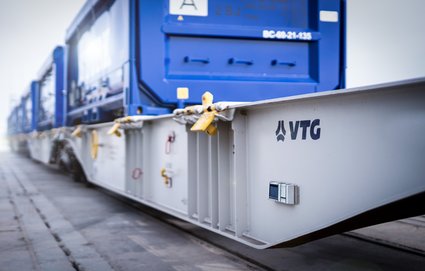
4. Intermodality
Freight transports do not have to be performed exclusively by rail. In fact, so-called combined transport – meaning the use of multiple modes of transporting goods – is often the ideal solution. Whether for maritime transports or continental cargo flows across Europe, freight transports can be easily shifted from road to rail and back with the right intermodal wagons and matching add-on services. For example, combined transport allows long distances to be covered by rail, while trucks take over the first and last mile, if necessary. At present, 95% of semitrailers are not craneable, which means they cannot be transferred from trucks to intermodal freight wagons. However, with the help of innovative transshipment and transport technologies – such as the “roadrailLink” platform, or r2L for short – non-craneable trailers can be carried by rail and therefore used for combined transport. One big advantage here is the simple and safe handling in terminals, as no ramp or other equipment is required for loading and unloading and the short loading process can be performed precisely and without much manual intervention.
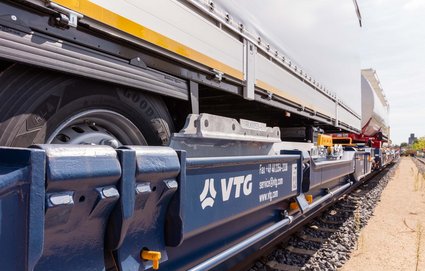
Bring your goods onto the rails!
Freight transport by rail offers a wide range of advantages. Freight transports can easily be shifted to rail for all or part of their journey, making them much more energy-efficient and sustainable on the whole. Whether hiring rail freight wagons and tank containers or utilizing multimodal logistics services, choose rail for your freight transports and benefit in the long term from the decisive advantages that this mode of transport entails. What's more, no matter which industry sector is involved, VTG has many years of experience and boasts specific expertise along the entire transport chain.
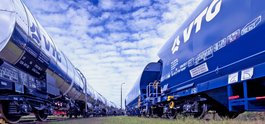



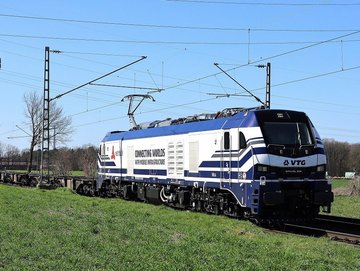
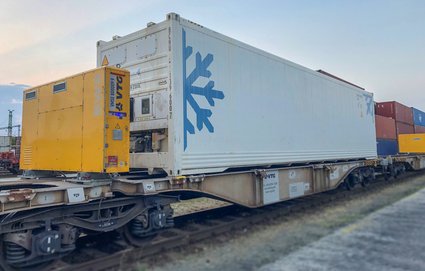
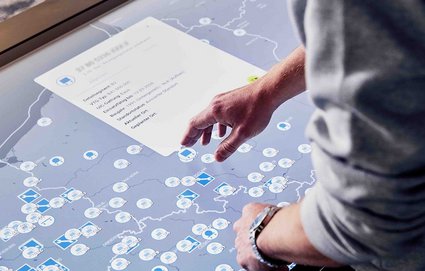
![[Translate to English:] Frau auf Hocker an Tisch mit Laptop davor](/fileadmin/_processed_/e/f/csm_610x420_Allgemeiner_Kontakt_01f8de5be4.jpg)